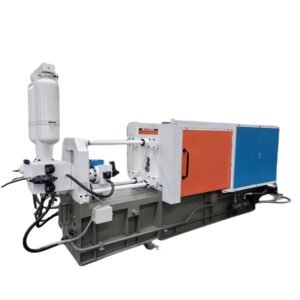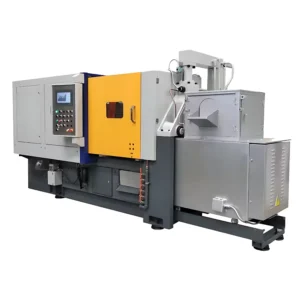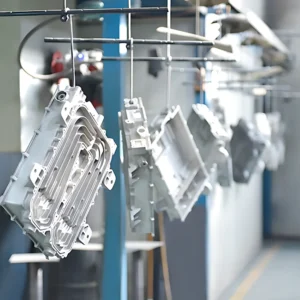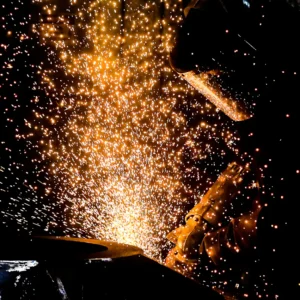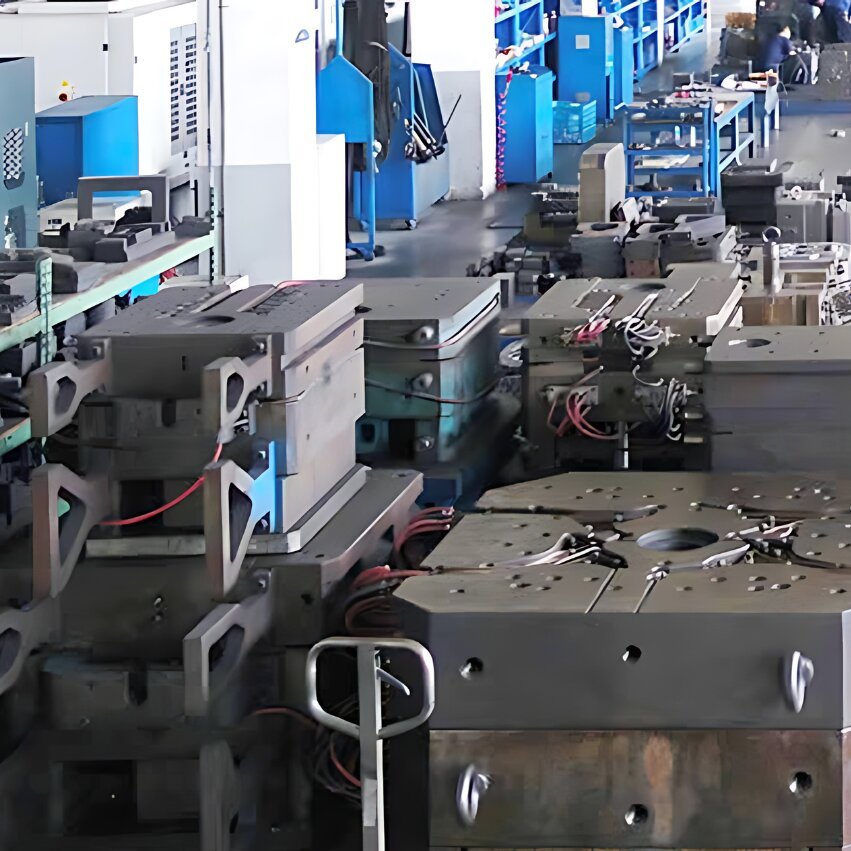CNC milling involves using rotating tools to remove material from a stationary workpiece, allowing for complex shapes and features. CNC turning, on the other hand, involves rotating the workpiece while a fixed cutting tool shapes it, primarily used for creating cylindrical parts.
In this post, we will cover the main differences between CNC turning and milling. We will also cover the main advantages of each process, as well as some of the common parts that companies produce using each method.
Related more: How to calculate CNC machining cost per hour?
What Is CNC Milling?
CNC milling is a popular type of CNC machining. It can produce a wide variety of CNC-machined parts. Many companies use CNC Milling to create unique prototype samples. With these prototype samples, manufacturers can quickly gather their shortcomings and improve them.
A CNC milling machine uses computerized commands to quickly move a cutting tool in three or more directions. When the moving cutting tool makes contact with the workpiece being machined, it precisely removes the material. The cutting tool goes back and forth across the surface of the workpiece until it has been cut into the required shape.
Most CNC milling machines keep the workpiece steady by clamping it to the machine bed. Multi-axis CNC milling machines, on the other hand, can rock or rotate the workpiece to achieve additional cutting angles. This enables producers to produce more complex pieces without physically flipping the workpiece.
CNC milling is a convenient one-stop shop process for getting everything done quickly. For this reason, many part manufacturers choose CNC milling for prototyping.
Advantages of CNC Milling
CNC milling machines can provide significant benefits to manufacturers and prototype companies. Milling machines, on the other hand, are more versatile and capable of producing a wide range of shapes. Cutting tools are offered for a variety of machining activities, including roughing and milling.
CNC milling machines, while primarily utilized for manufacturing, can also be used for post-processing. One approach to accomplish this is to add detail to turned, molded, or 3D-printed parts.
CNC milling is quick and repeatable, and the cost of a small amount of cutting and machining is reasonable. As a result, it can be found in services that manufacture products as well as those that create rapid prototypes.
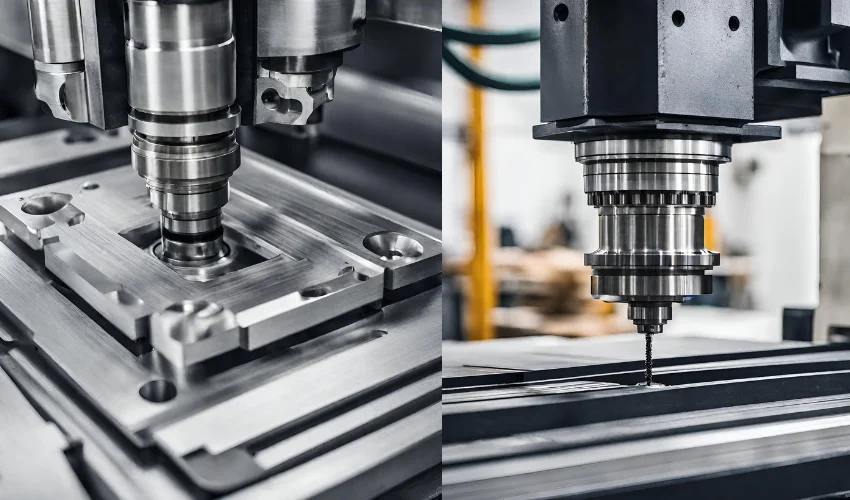
What is CNC Turning?
CNC turning is a frequent type of CNC machining. It may produce round, cylindrical, or conical pieces. It is one of the most well-known CNC machining and quick prototyping services. However, it cannot perform as well as CNC milling.
CNC lathes and CNC turning centers are mechanical equipment that enable CNC turning. Their cutting tools do not spin like a CNC milling machine but rather rotate the workpiece being machined rapidly in a chuck. The cutting tool is located on a rotating axis and advances towards the rotating object according to computer instructions. The desired material can then be cut according to the data instructions.
CNC lathes may produce tubular CNC machined components. This signifies that the CNC lathe can cut both the outside of the part and drill holes inside it. There could be several cutting tools on the machine turret, each of which can be utilized as needed.
Advantages of CNC Turning
The most significant advantage of CNC turning is its ability to produce circular objects. Other CNC cutting methods, such as CNC milling and routing, make it impossible to get a completely round shape.
Furthermore, CNC turning is highly exact. It is an effective tool for creating holes with precise dimensions within a specific range.
To maximize the benefits of both CNC routing and CNC turning, you can combine them. CNC turning is typically the initial step. This enables the machinist to add more detail to the item using milling.
Parts that Can Be Made by CNC Milling
The following parts can be manufactured using CNC milling:
- Fittings: Milled connect two or more pieces together.
- Covers and housings: Custom-milled housings protect appliances and other things.
- Plates and brackets: Milled brackets can be more complex than sheet metal brackets because they may have specialized holes and threads.
- Gears: CNC milling may produce spur and helical gears.
- Molding tools: Milling molds, which can be made of steel or metal, enable rapid prototyping of molded items.
- Engine parts: Automotive specialists employ CNC milling to create engine blocks and other parts.
- Medical devices: CNC milling machines produce surgical tools and other medical items.
- Water Pumps: Multi-axis milling machines provide efficient impellers for hydraulic machinery.
- Forming Punches: CNC milling machines can also produce forming punches for sheet metal fabrication
Parts that Can Be Made by CNC Turning
CNC turning can be used to make the following parts:
- Rollers: CNC lathes can produce industrial rollers with precise tolerances.
- Ball joints: CNC lathes are ideal for producing smooth joint pieces, including ball joints.
- Bolts and nuts: Turning’s great accuracy makes it suitable for manufacturing products that require precise tolerances.
- Shafts: CNC turning is ideal for cutting circular shafts.
- Pipes: CNC-turned joints strengthen pipes and beams.
- Nozzles: Nozzles are typically circular or tapered with an interior opening, making them ideal for CNC turning.
- Turbines: CNC turning can manufacture round turbine blades for the energy industry.
- Guns: CNC machines can produce the tubular shapes required for gun barrels.
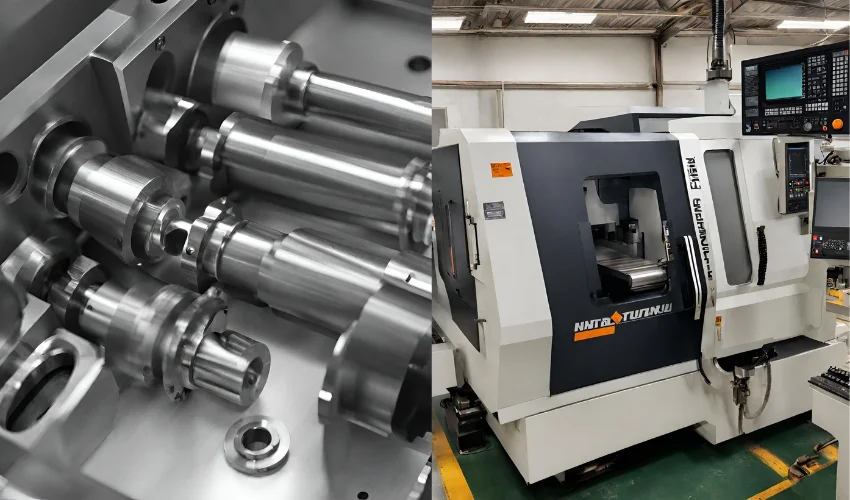
Which Should You Choose?
In general, CNC milling is better suited for all other shapes, whereas CNC turning is better for round, cylindrical, or conical pieces. If you are not sure which CNC machining service is better suited to your project. Then contact us today and China Casting Synergy Group can personalize our services to meet your specific requirements.
However, CNC milling and CNC turning can function effectively together. If the part is essentially round, but must be slotted or have irregular features, then CNC milling can be used after CNC turning. If a large hole needs to be drilled in the center of a square or irregularly shaped object, then CNC milling can be used after CNC turning.
Choose Casting for CNC Turning and Milling
CNC turning and milling provide unrivaled precision in the manufacture of parts with complex features and tight tolerances. The control and precision provided by CNC machines allow for the consistent production of high-quality parts, which is essential for industries where precision is critical, such as aerospace, automotive, and medical devices.
At China Casting Synergy Group, we utilize advanced CNC turning and milling technology to provide superior machining services. Our state-of-the-art equipment and skilled technicians ensure that we can efficiently and accurately handle mass production runs and detailed custom projects. Contact us for a quote.

